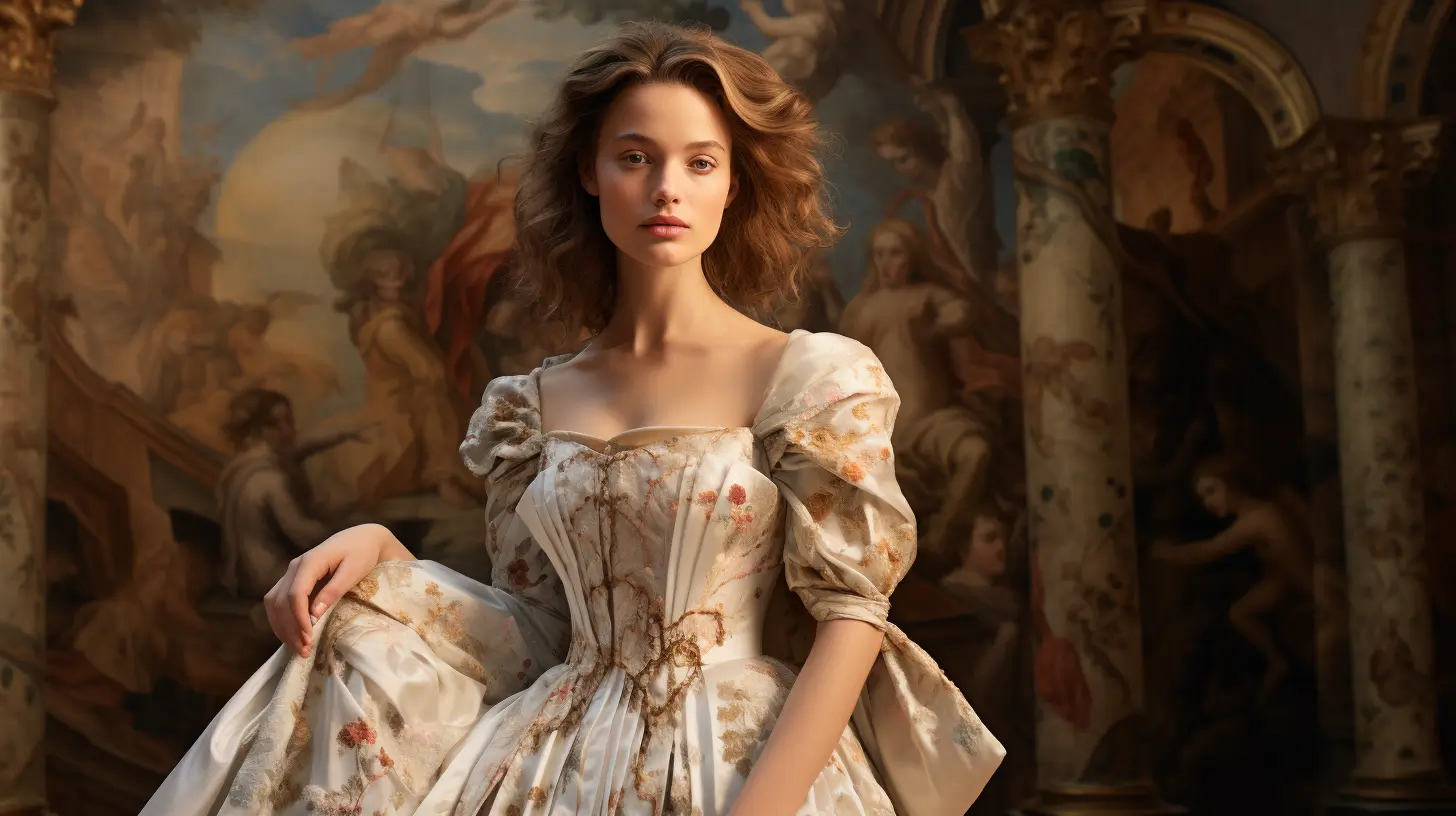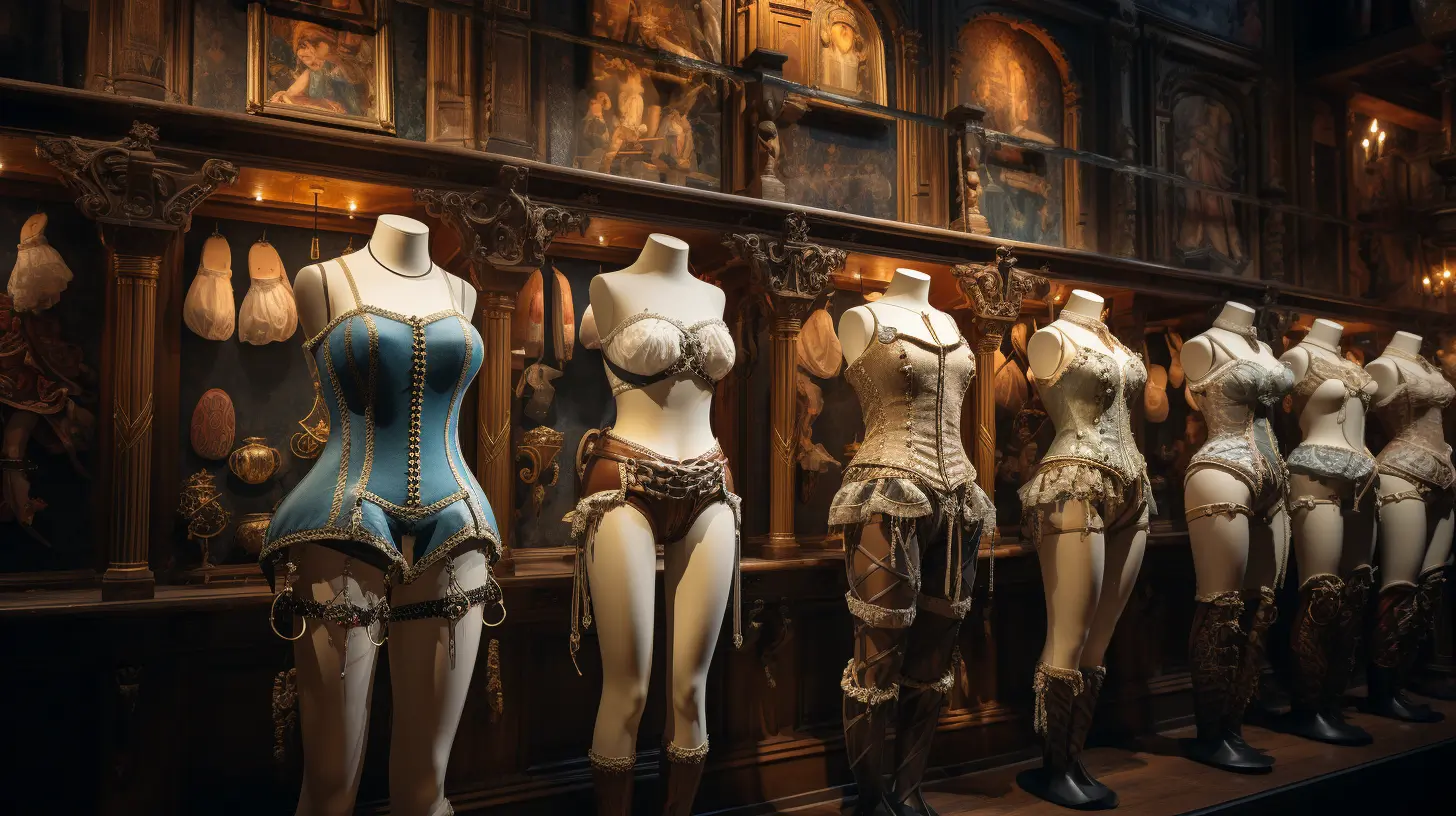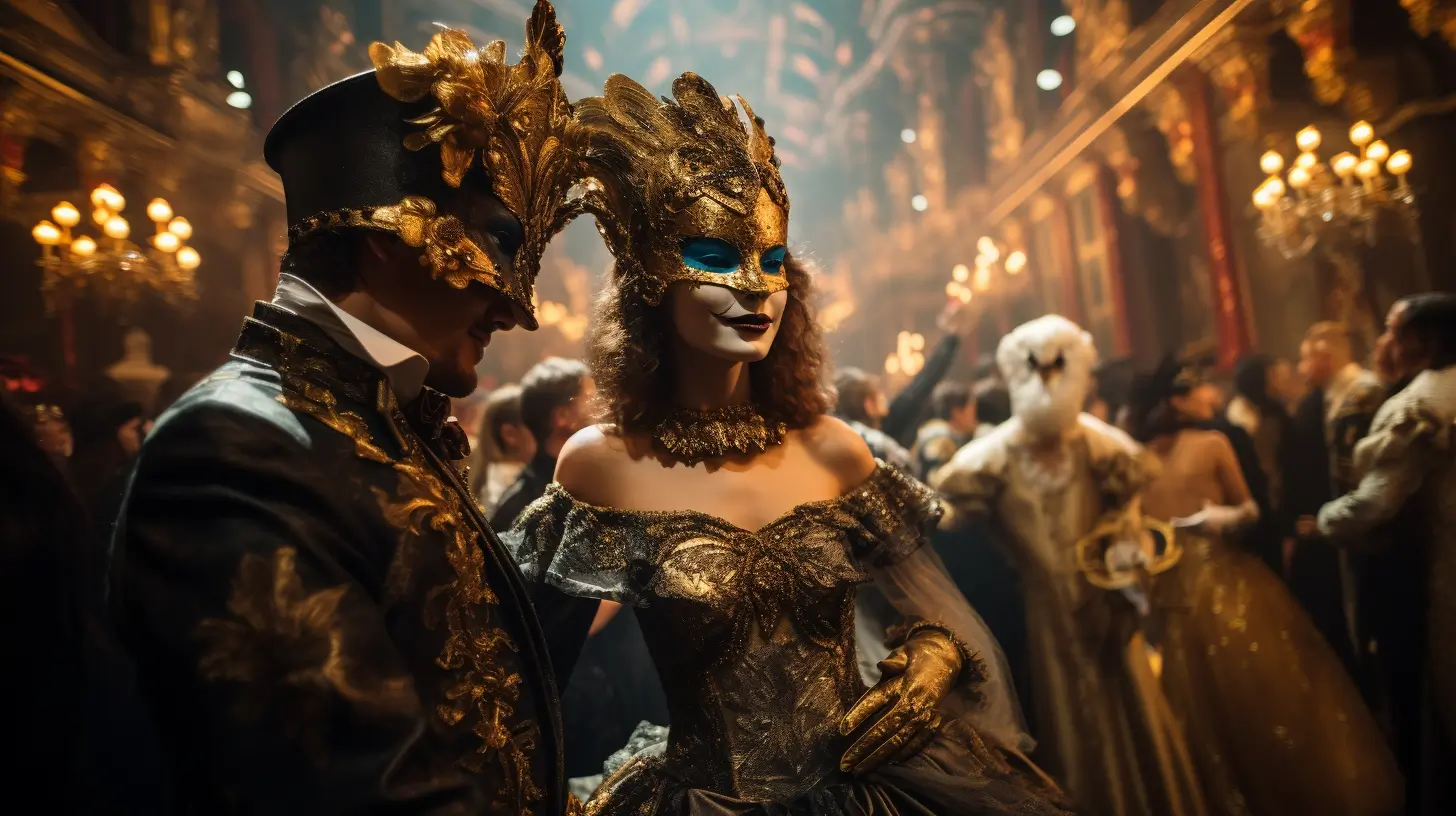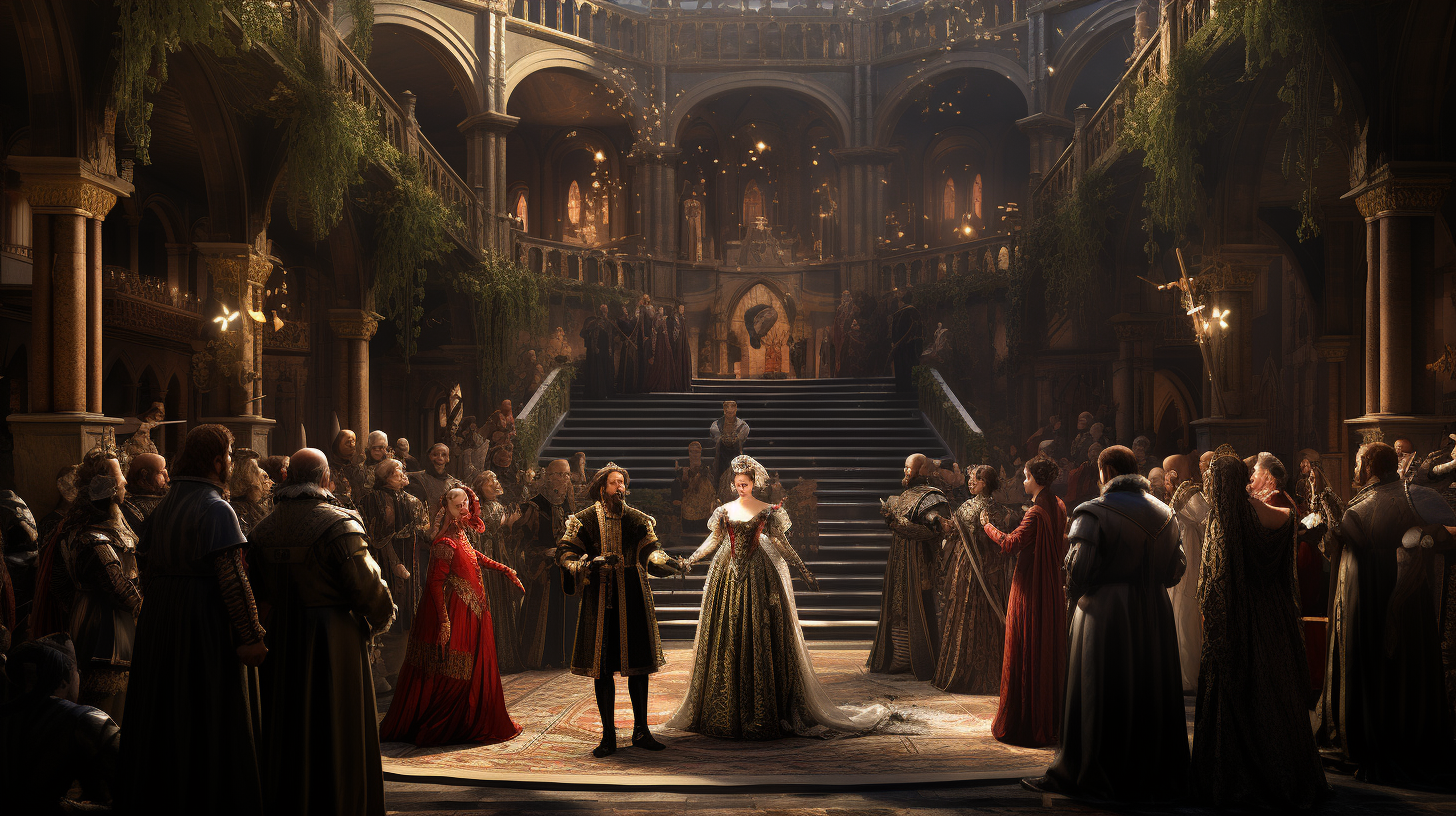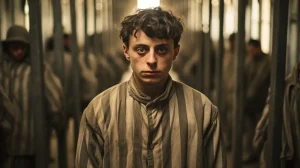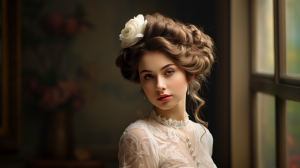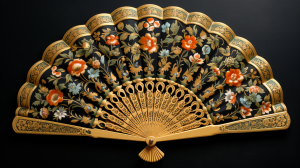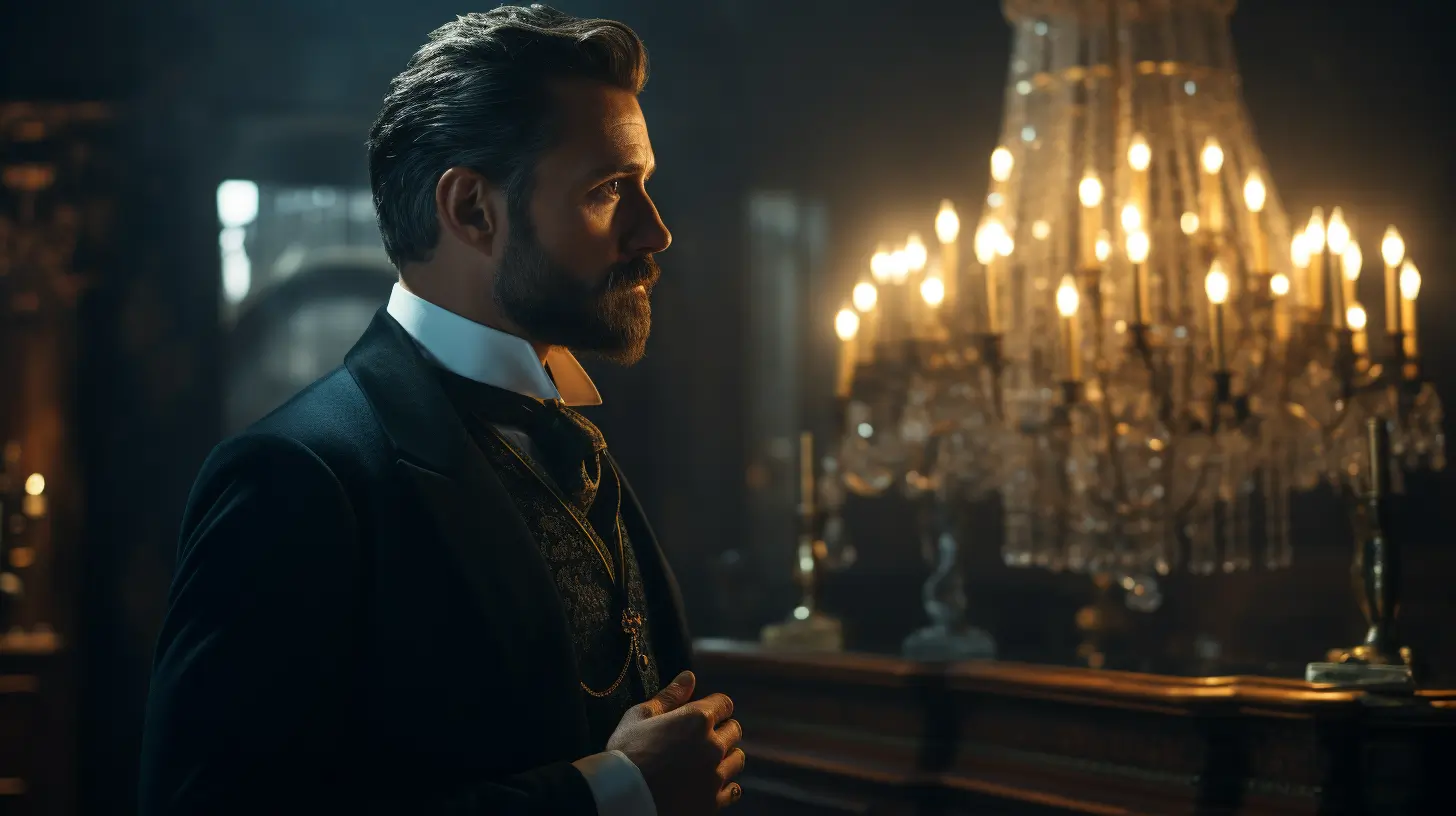
🎩 A Stroll Through Time: Unveiling Victorian Men’s Fashion Essentials 🎩
In the grand tapestry of fashion history, there exists a period where elegance, sophistication, and timeless style reigned supreme. Welcome, dear readers, to a sartorial journey like no other, as we venture back to the 19th century, a time of Victorian opulence and refinement. Our focus? The Victorian men’s fashion essentials, a world where clothing was not just attire but a reflection of one’s stature, character, and societal standing.
🕰️ As we embark on this captivating exploration, picture yourself transported to the cobbled streets of Victorian London, the air filled with the resonance of carriage wheels and the rustling of fine garments. With each step, we’ll uncover the must-have garments, accessories, and grooming rituals that defined the style of Victorian gentlemen.
🕰️ The Victorian Era Overview: A Glimpse into the Past 🕰️
To fully appreciate the essence of Victorian men’s fashion essentials, it’s imperative that we step into the broader context of the era that birthed this exquisite style. The Victorian era, spanning from 1837 to 1901 during the reign of Queen Victoria, was a period of remarkable societal change, innovation, and, of course, fashion evolution.
Society’s Impact on Fashion
The Victorian era was marked by strict societal norms and values that had a profound influence on clothing and style. The rigid class structure of the time played a pivotal role in dictating what was considered fashionable and appropriate for different social strata.
- High Society: The upper echelons of Victorian society were characterized by opulence and extravagance. Nobility and the upper class set the fashion trends, with an emphasis on lavish fabrics, intricate designs, and accessories that showcased wealth and status.
- Middle Class: The burgeoning middle class, eager to emulate the aristocracy, embraced more practical yet stylish attire. Tailored suits and modest accessories became the hallmark of middle-class Victorian men’s fashion.
- Working Class: For the working-class individuals, functionality took precedence. Simple and durable clothing was essential to meet the demands of labor-intensive jobs.
Technological Advancements and Fashion Innovation
The Victorian era was a time of significant technological advancements. The advent of the sewing machine, for example, revolutionized the production of clothing, making it more accessible to a broader segment of the population. This technological leap had a direct impact on the availability and affordability of fashion, allowing for greater diversity in style.
Fashion as a Reflection of Victorian Values
Fashion during this era wasn’t merely a matter of aesthetics; it was a reflection of societal values and beliefs. Modesty, morality, and propriety were central themes, influencing everything from the length of a gentleman’s trousers to the cut of his coat.
- Modesty: Victorian men’s fashion placed a premium on modesty. Clothing was designed to conceal the body, with high collars, long sleeves, and full-length trousers becoming the norm.
- Morality: A gentleman’s attire was expected to reflect his moral character. Cleanliness, neatness, and adherence to societal norms were essential.
- Propriety: Society had stringent expectations of how individuals should present themselves. Grooming and etiquette were integral aspects of a gentleman’s daily life.
In this era of immense change and societal evolution, the threads of fashion wove together a narrative of identity, class, and values. As we delve deeper into the world of Victorian men’s fashion, keep these historical underpinnings in mind, for they are the foundation upon which our exploration rests.
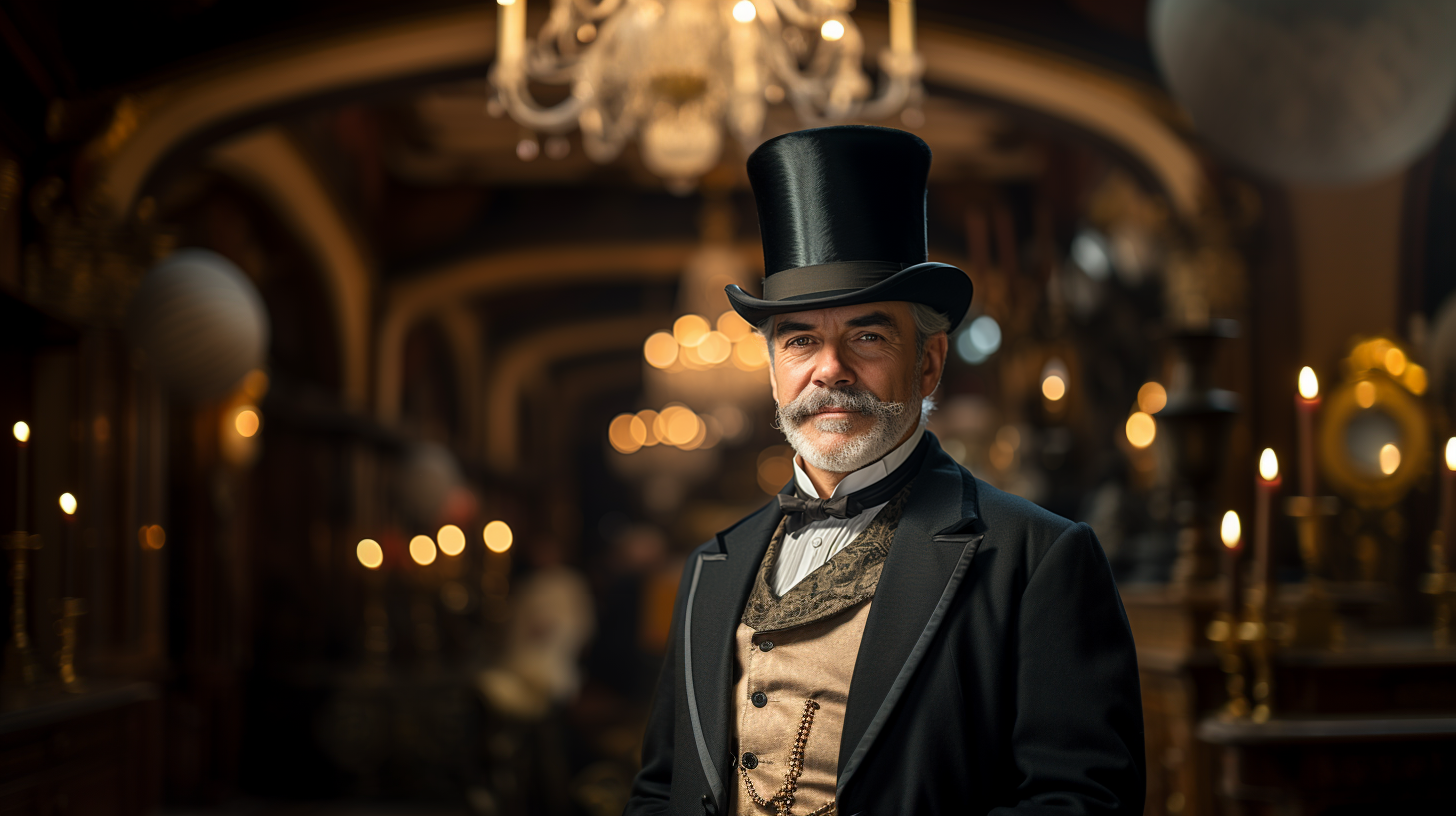
[ image of a Victorian gentleman dressed in the epitome of Victorian fashion, showcasing the intricate details of his attire, including his cravat, waistcoat, and top hat.]
👔 Victorian Men’s Wardrobe Staples: Dressing with Dignity 👔
Now that we’ve stepped into the world of the Victorian era, let’s dive into the core of Victorian men’s fashion essentials, their wardrobe. A Victorian gentleman’s attire was a symphony of carefully selected garments, each with its purpose, style, and significance.
Tailored Suits and Frock Coats
- The Elegance of Tailoring: The hallmark of a Victorian gentleman’s wardrobe was the impeccably tailored suit. These suits were characterized by their structured silhouette, emphasizing broad shoulders and a narrow waist. The coat’s length varied, from shorter jackets for casual occasions to long frock coats for formal events.
- Fabrics of Choice: Suits were typically crafted from high-quality materials such as wool, tweed, and worsted. The choice of fabric often reflected the season and the formality of the occasion.
Waistcoats and Cravats
- The Stylish Waistcoat: The waistcoat, also known as the vest, was an essential layering piece. It added both style and warmth to a gentleman’s ensemble. Waistcoats were adorned with intricate patterns and buttons, making them a statement piece.
- Cravats: The Neckwear Artistry: Cravats, precursors to modern neckties, were a canvas for creativity. These neckwear accessories were tied in intricate knots and often featured ornate pins or brooches. They were a symbol of a gentleman’s attention to detail.
Trousers and Trouser Styles
- Perfectly Trousered: Trousers were a crucial component of a gentleman’s attire. They were typically high-waisted and tailored for a snug fit. Victorian men favored trousers in solid colors or subtle patterns.
- Breeches and Riding Trousers: For sporting activities and horseback riding, gentlemen would opt for breeches or riding trousers, which allowed for ease of movement.
Shirts, Collars, and Cuffs
- The Crisp White Shirt: A Victorian gentleman’s shirt was almost always white, symbolizing purity and refinement. Shirts featured high collars, often detachable, and fine detailing such as pleats and embroidered fronts.
- Collars and Cuffs: Collars and cuffs were detachable, allowing for easy laundering and customization. The choice of collar style could vary from the wingtip to the stand collar, depending on the occasion.
As we explore these essential garments, envision the meticulous craftsmanship and attention to detail that went into their creation. Each piece was a testament to a gentleman’s dedication to dressing with dignity and elegance.
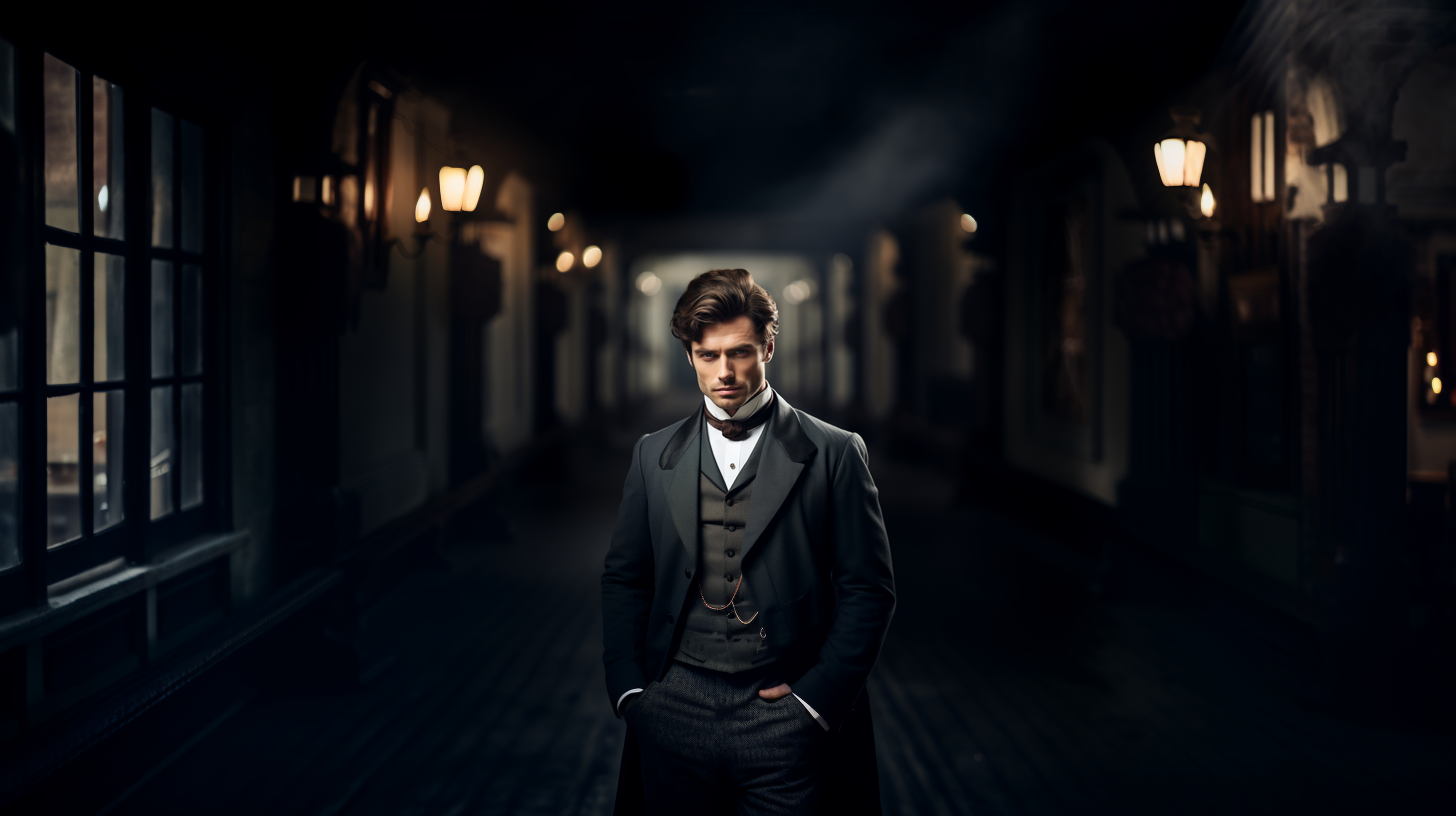
[a Victorian gentleman standing confidently, dressed in a perfectly tailored suit, waistcoat, and cravat. His trousers are impeccably fitted, and his shirt features a high, detachable collar. This image captures the essence of Victorian men’s fashion essentials.]
🎩 Accessories for the Dapper Victorian Gentleman: Adding the Finishing Touch 🎩
A Victorian gentleman’s attire was not complete without the meticulously chosen accessories that added flair, functionality, and a touch of individuality to his look. These accessories were more than just adornments; they were statements of refinement and personal taste.
Top Hats and Bowler Hats
- The Crown of Elegance: The top hat, often made of silk or felt, was a symbol of status and sophistication. It was an essential accessory for formal occasions.
- Bowler Hats: A Dash of Playfulness: The bowler hat, with its round and compact design, offered a more casual and approachable look. It was favored by city dwellers and gentlemen looking for a touch of whimsy.
Pocket Watches and Watch Chains
- Timepieces of Precision: Victorian men prized their pocket watches for their accuracy and craftsmanship. These watches were often attached to elegant watch chains that dangled from a waistcoat buttonhole.
Gloves and Walking Sticks
- The Art of Gloving: Gloves were both a practical and stylish accessory. They protected a gentleman’s hands and added a touch of refinement. Fine leather gloves were preferred for formal occasions.
- Stylish Support: Walking Sticks: Walking sticks were not only aids for walking but also fashion statements. They came in various styles, from ornate canes to simple yet stylish designs.
Umbrellas and Canes
- Elegance in Rain or Shine: Victorian gentlemen carried umbrellas as a practical accessory for protecting themselves from the elements. These umbrellas often featured intricate handles and details.
As we explore these accessories, envision a Victorian gentleman’s meticulous attention to detail. Each piece was carefully selected to complement his attire, adding to the overall impression of dignity and charm.
Image Placeholder: [Describe an image of a Victorian gentleman holding a top hat and a pocket watch with an ornate chain. The image captures the essence of Victorian men’s fashion accessories, showcasing the intricate details of these items.]
💈 Grooming and Personal Care: The Victorian Gentleman’s Daily Rituals 💈
In the pursuit of sartorial excellence, Victorian gentlemen understood that fashion extended beyond clothing and accessories. Grooming and personal care were integral aspects of their daily lives, ensuring they presented themselves with impeccable style and sophistication.
Facial Hair Styles and Grooming Products
- The Victorian Beard: Facial hair was in vogue during the Victorian era, with a variety of styles to choose from. These styles ranged from the full beard to the neatly trimmed mustache.
- Grooming Products: Victorian gentlemen used an array of grooming products, including beard combs, oils, and waxes to maintain their facial hair with precision.
Perfumes, Colognes, and Toiletries
- Scent of Refinement: A gentleman’s choice of scent was a matter of personal preference. Perfumes and colognes were applied sparingly to enhance one’s presence without overwhelming.
- The Art of Toiletries: A well-stocked toiletry cabinet included items such as shaving brushes, razors, and soap. Shaving was a precise ritual, often accompanied by the use of a straight razor.
As we delve into the realm of grooming and personal care, picture a Victorian gentleman meticulously attending to his appearance in the morning light, the soft scent of cologne in the air, and the delicate sound of a straight razor against a porcelain shaving bowl.
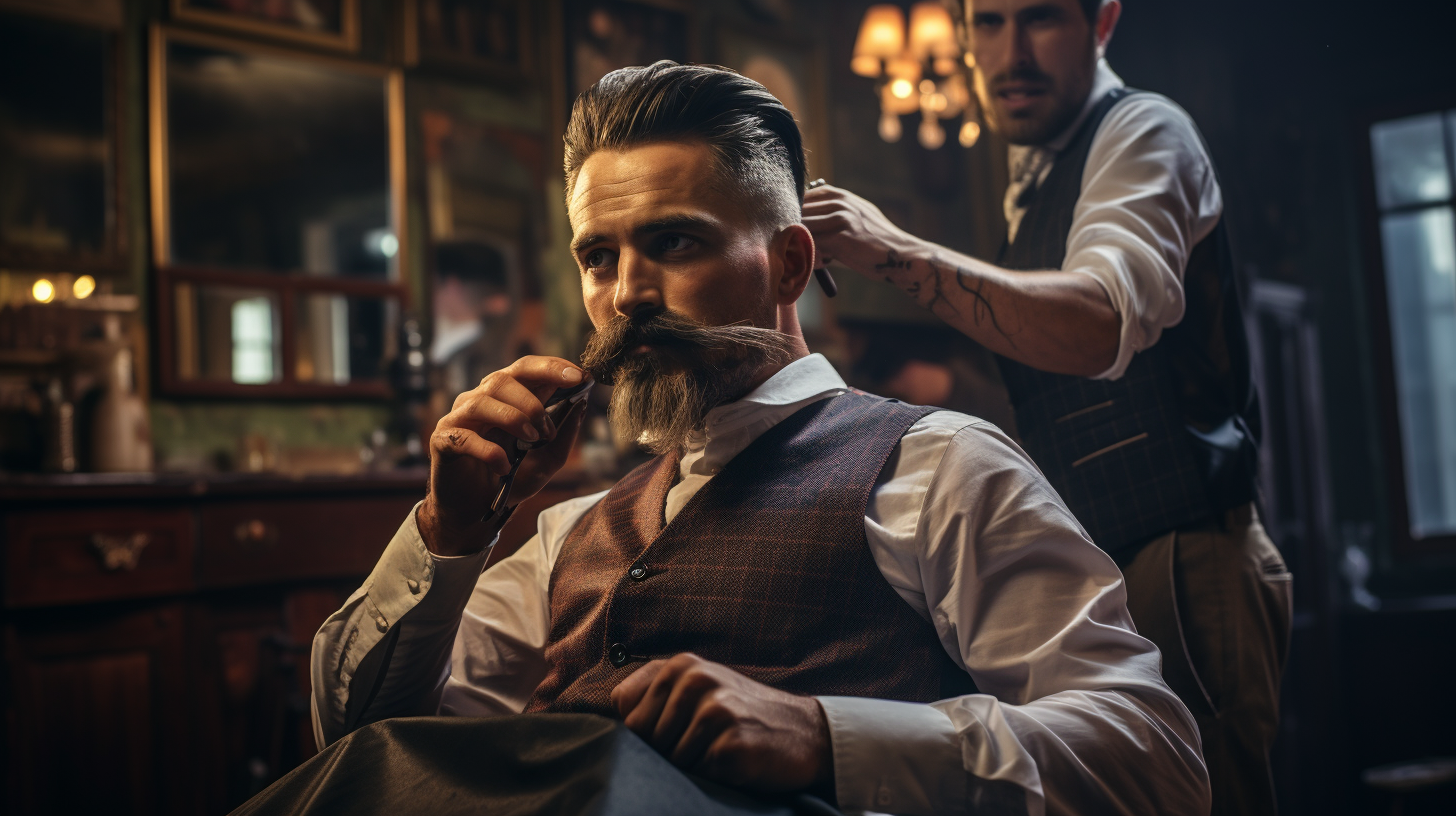
[a Victorian gentleman in a well-appointed grooming room, carefully grooming his beard with a vintage straight razor. The image captures the essence of Victorian grooming rituals and the attention to detail that accompanied them.]
🧵 Materials and Fabrics: Crafting the Victorian Wardrobe 🧵
As we continue our journey through the world of Victorian men’s fashion, it becomes clear that the essence of elegance lies not only in the design but also in the choice of materials and fabrics. The Victorian era witnessed a rich tapestry of textiles, each contributing to the refinement and character of a gentleman’s attire.
Wool, Silk, and Linen
- The Versatility of Wool: Wool was a staple fabric in Victorian men’s fashion. It offered warmth, durability, and versatility. Wool suits, overcoats, and waistcoats were commonplace.
- The Luxurious Silk: Silk was synonymous with luxury and opulence. Victorian gentlemen reserved silk for special occasions and formal events, as it exuded an aura of extravagance.
- The Breathable Linen: In warm weather, linen was the fabric of choice. Its breathability and lightweight nature made it ideal for summer suits and shirts.
Velvet and Tweed
- The Regal Velvet: Velvet was reserved for the most formal occasions. It added a touch of regality to evening wear, often seen in smoking jackets and dinner coats.
- The Rugged Elegance of Tweed: Tweed was a fabric suited for outdoor pursuits. Its rugged texture and durability made it ideal for hunting and country attire. Tweed suits and jackets were popular choices for leisure activities.
As we explore these materials and fabrics, envision the tactile experience of running your fingers over the fine silk of a waistcoat or the warmth of a well-tailored woolen coat on a crisp Victorian morning.
Image Placeholder: [Describe an image of a Victorian gentleman elegantly attired in a silk suit, standing beside a tweed-clad companion. The image captures the contrast between luxurious silk and rugged tweed, showcasing the versatility of Victorian fabrics.]
🎩 Fashion Icons of the Victorian Era: Influential Figures in Men’s Style 🎩
Behind every era’s fashion evolution, there are iconic figures who set the tone, redefined style, and left an indelible mark on the sartorial landscape. The Victorian era was no exception, with several notable gentlemen who embodied the essence of Victorian men’s fashion.
Beau Brummell: The Dandy Extraordinaire
- The Quintessential Dandy: George Bryan “Beau” Brummell was a trendsetter and the ultimate dandy of his time. He revolutionized men’s fashion by advocating for simplicity, cleanliness, and perfectly tailored attire.
- The Power of Simplicity: Beau Brummell’s signature style consisted of impeccably fitted dark suits, crisp white shirts, and meticulously tied cravats. He believed in the power of understated elegance.
Prince Albert: A Royal Influence
- Royal Elegance: Prince Albert, husband to Queen Victoria, was a significant influencer of Victorian men’s fashion. He popularized the frock coat, a long formal coat with a fitted bodice and full skirt, which became a staple of formal wear.
- Albert Watch Chain: The prince also popularized the wearing of pocket watches with an albert watch chain, which was named in his honor. This accessory added a touch of regal refinement to a gentleman’s attire.
Oscar Wilde: A Wilde Sense of Style
- Artistic Flair: Oscar Wilde, known for his wit and literary prowess, was also a style icon. He embraced flamboyant and extravagant clothing, advocating for bold patterns, bright colors, and ornate accessories.
- Velvet Jackets and Aestheticism: Wilde’s wardrobe featured velvet jackets, lustrous silk waistcoats, and elaborate cravats. His fashion choices were a reflection of the Aesthetic Movement, which celebrated beauty and art.
As we explore the fashion icons of the Victorian era, envision their distinct styles, each contributing to the rich tapestry of Victorian men’s fashion. These figures were not just well-dressed; they were trailblazers who left an enduring legacy in the world of style.
Image Placeholder: [Describe an image that combines portraits of Beau Brummell, Prince Albert, and Oscar Wilde, each dressed in their signature styles. The image captures the essence of these fashion icons and their unique contributions to Victorian men’s fashion.]
🌍 Cultural Influences on Victorian Fashion: The Tapestry of Society 🌍
Fashion is not created in a vacuum; it is a mirror reflecting the values, beliefs, and influences of society. In the Victorian era, fashion was intrinsically connected to the cultural shifts and societal norms of the time. Let’s delve into the tapestry of cultural influences that shaped Victorian men’s fashion.
Industrial Revolution: The Rise of Ready-Made Clothing
- The Impact of Industry: The Industrial Revolution transformed the fashion landscape by introducing mechanized textile production. This led to the availability of ready-made clothing, making fashion accessible to a broader spectrum of society.
Colonialism and Global Trade: Exotic Influences
- Exotic Fabrics and Patterns: Colonialism and global trade brought an influx of exotic fabrics, patterns, and accessories into Victorian fashion. Paisley shawls from India, Egyptian motifs, and African-inspired jewelry became fashionable.
Class Distinctions: Clothing as a Social Marker
- Class and Fashion: Victorian society was highly stratified, and clothing played a significant role in distinguishing one’s social class. The choice of materials, colors, and accessories often signaled one’s social standing.
Art and Aesthetic Movement: Embracing Beauty
- The Aesthetic Movement: The Aesthetic Movement celebrated beauty and art in everyday life. This artistic influence can be seen in fashion through bold patterns, vibrant colors, and unconventional attire.
Cultural References: Shakespearean and Historical Revivals
- Shakespearean Revival: The Victorian era witnessed a revival of interest in Shakespearean fashion, with men often wearing doublets and ruffled collars reminiscent of the Elizabethan era.
- Historical Revivals: Historical revivals also influenced fashion, with garments harkening back to the Renaissance and Romantic periods. These revivals added a sense of nostalgia to Victorian attire.
As we explore the cultural influences on Victorian fashion, imagine the intricate interplay between society and style. Victorian men’s fashion was not just about clothing; it was a reflection of the dynamic and evolving world in which they lived.
Image Placeholder: [Describe an image that depicts a bustling Victorian city street with people from various social classes dressed in their distinct attire. This image captures the cultural diversity and class distinctions present in Victorian society.]
🕰️ Fashion Evolution: Victorian to Modern – Bridging the Time Gap 🕰️
As we traverse the annals of fashion history, it’s fascinating to witness the evolution of style from the Victorian era to the modern age. The shift in societal norms, values, and technology has left an indelible mark on how men dress. Let’s embark on a journey through time and explore how Victorian men’s fashion has influenced the modern wardrobe.
Victorian Elegance Meets 20th Century Practicality
- The Legacy of Tailoring: The art of tailoring, perfected during the Victorian era, remains at the heart of modern menswear. Precision and attention to fit, once synonymous with Victorian attire, continue to shape modern suits.
- The Birth of Casual Wear: The Victorian era was known for its formality, but it laid the groundwork for modern casual wear. The transition from stiff collars and top hats to relaxed shirts and sneakers mirrors societal shifts towards comfort and practicality.
Accessories: From Pocket Watches to Smartphones
- Pocket Watches to Smartphones: The pocket watch, once an essential accessory for Victorian gentlemen, has evolved into the ubiquitous smartphone of today. Both serve as timekeepers and status symbols, albeit in different forms.
Cultural References: Period Dramas and Fashion Revivals
- Period Dramas Influence: Period dramas like “Downton Abbey” and “Peaky Blinders” have sparked a resurgence of interest in Victorian-style fashion. Modern interpretations of Victorian-inspired attire continue to be popular.
Eco-Friendly Fashion: A Return to Quality
- Quality Over Quantity: The Victorian era valued craftsmanship and durability. In today’s world of fast fashion, there’s a growing movement toward sustainable, high-quality clothing—a return to Victorian values.
Global Influences: Fusion of Cultures
- Globalization of Style: The modern wardrobe is a testament to globalization, incorporating influences from around the world, much like the exotic fabrics and patterns that found their way into Victorian fashion.
As we bridge the gap between Victorian elegance and modern practicality, it’s clear that fashion is a dynamic and ever-evolving tapestry, reflecting the pulse of society at any given time.
Image Placeholder: [Describe an image that juxtaposes a well-dressed Victorian gentleman from the 19th century with a contemporary man in a modern suit. This image highlights the contrast and evolution of style over time.]
👔 Conclusion: Unveiling the Timeless Elegance of Victorian Men’s Fashion 👔
In this captivating journey through the annals of fashion history, we’ve unveiled the secrets, stories, and timeless elegance that defined Victorian men’s fashion. From the grandeur of top hats and cravats to the subtle sophistication of tailored suits, Victorian fashion leaves an indelible mark on our sartorial choices even today.
The Tapestry of Victorian Style: As we explored the layers of Victorian fashion, we witnessed how every garment, accessory, and grooming ritual was intricately woven into the fabric of society. The Victorian gentleman was not merely a well-dressed individual but a reflection of the cultural, social, and artistic influences of his time.
🌍 Cultural Influences: Victorian fashion was a melting pot of cultural influences, with elements from colonialism, the Industrial Revolution, and art movements shaping attire. These influences continue to resonate in the diverse and globalized world of fashion today.
🕰️ Bridging the Time Gap: We traced the evolution of Victorian style into the modern age, recognizing how the legacy of precision tailoring, the revival of historical fashion, and the fusion of global cultures have left their mark on contemporary attire. The past and present coexist in our closets, creating a rich tapestry of fashion history.
🌟 A Testament to Timelessness: Victorian men’s fashion is not a relic of the past; it’s a testament to timelessness. Whether it’s the enduring appeal of a well-fitted suit or the nostalgia for vintage-inspired trends, the essence of Victorian style lives on.
Image Placeholder: [Describe an image that captures the essence of Victorian elegance. It features a close-up of a well-groomed Victorian gentleman in a tailored suit, highlighting the intricate details of his attire and the timeless sophistication it exudes.]
As we conclude this journey, remember that fashion is not just about clothing; it’s a window into history, culture, and the human spirit’s desire for self-expression. The echoes of Victorian men’s fashion continue to reverberate in the way we dress and present ourselves to the world.
So, as you embark on your own sartorial adventures, may you carry with you the elegance, the artistry, and the enduring spirit of Victorian men’s fashion. Let the past inspire your present, and may your style be a reflection of the rich tapestry of fashion history.


